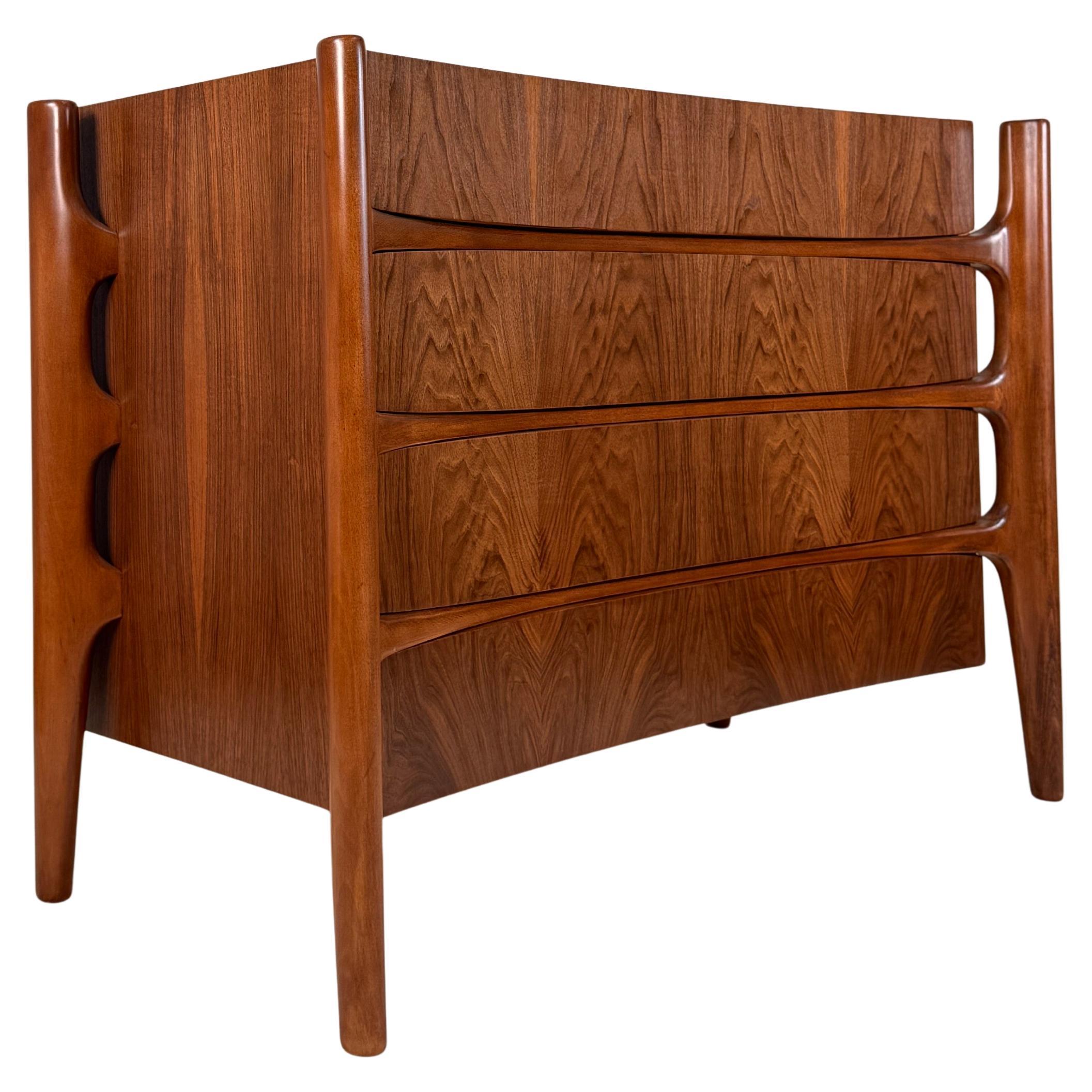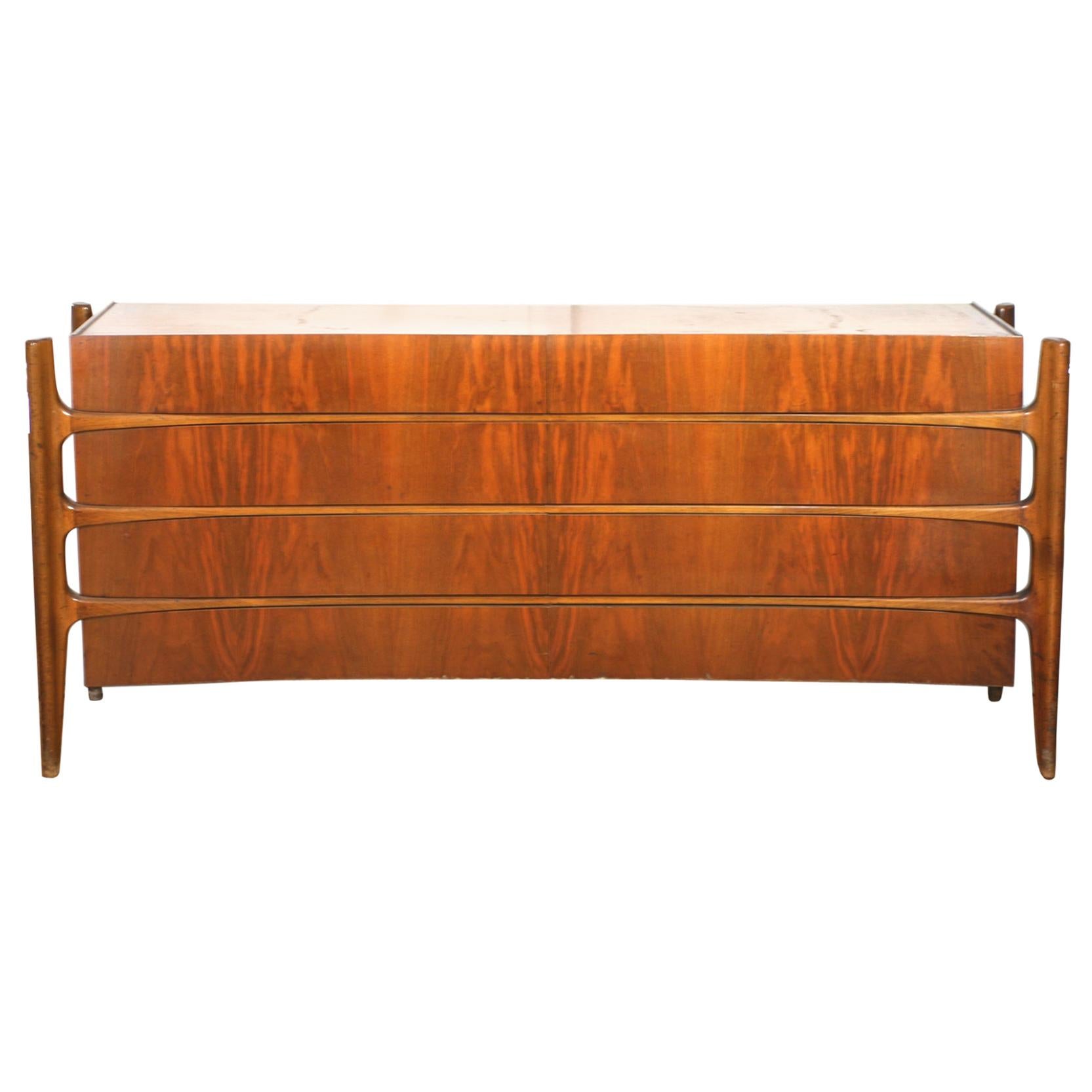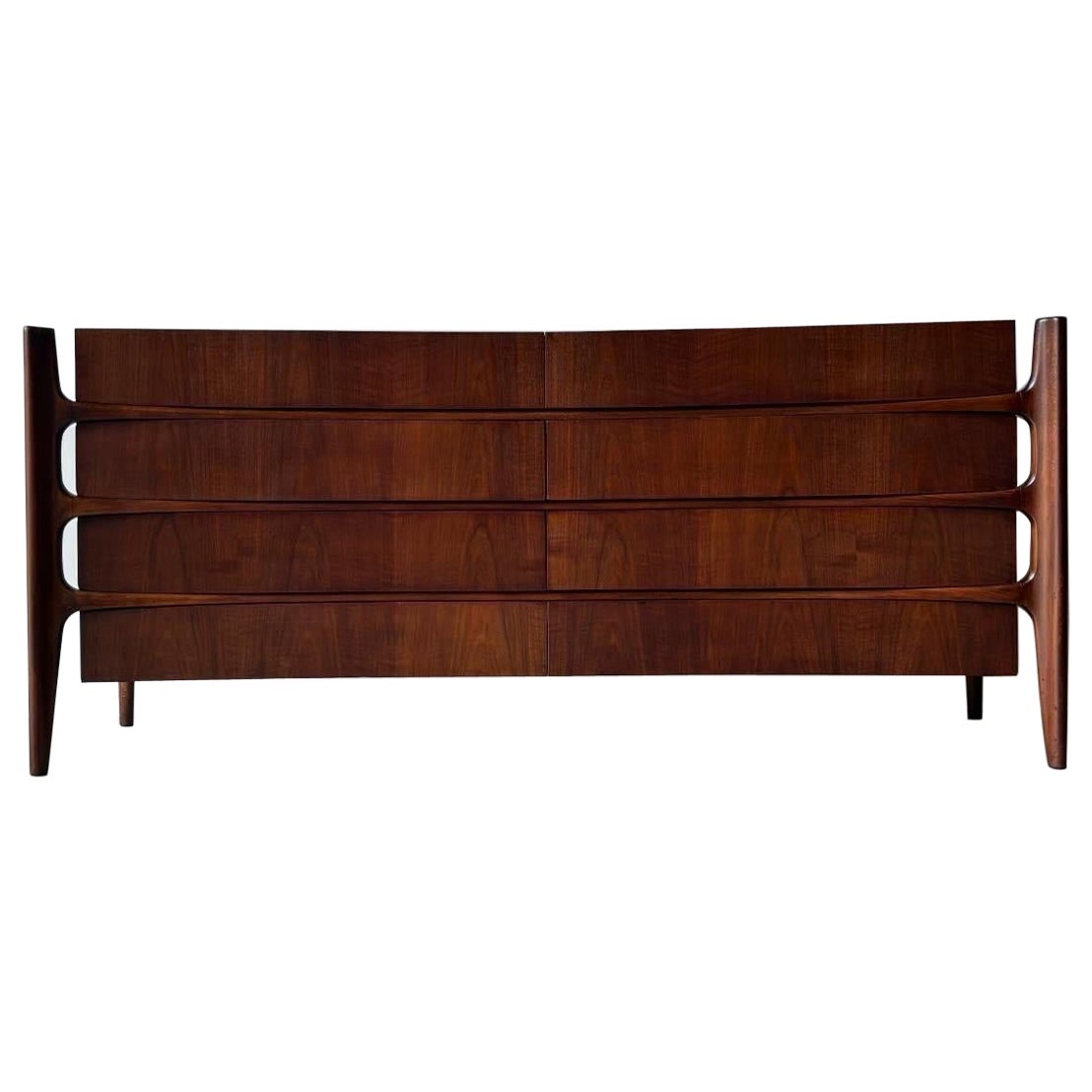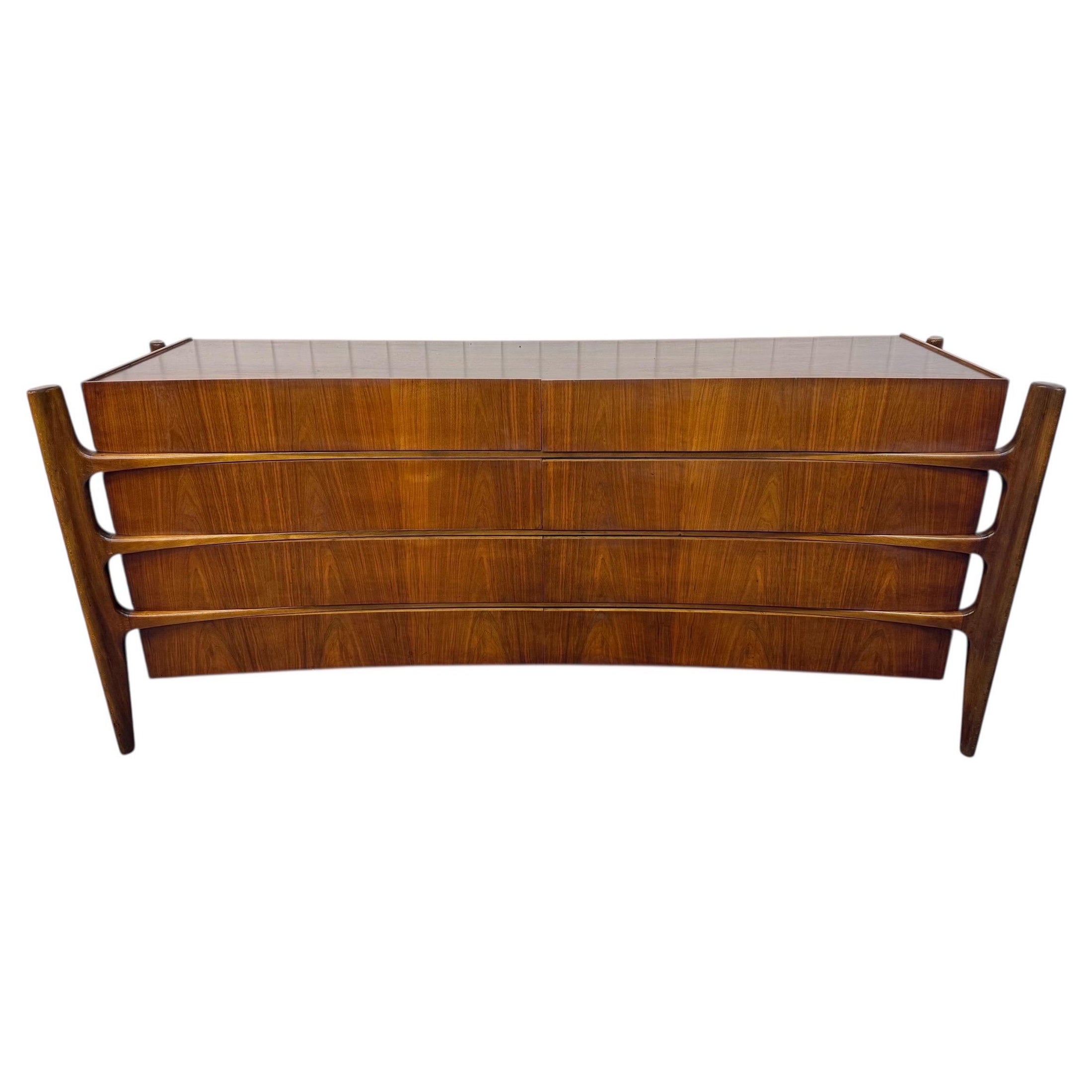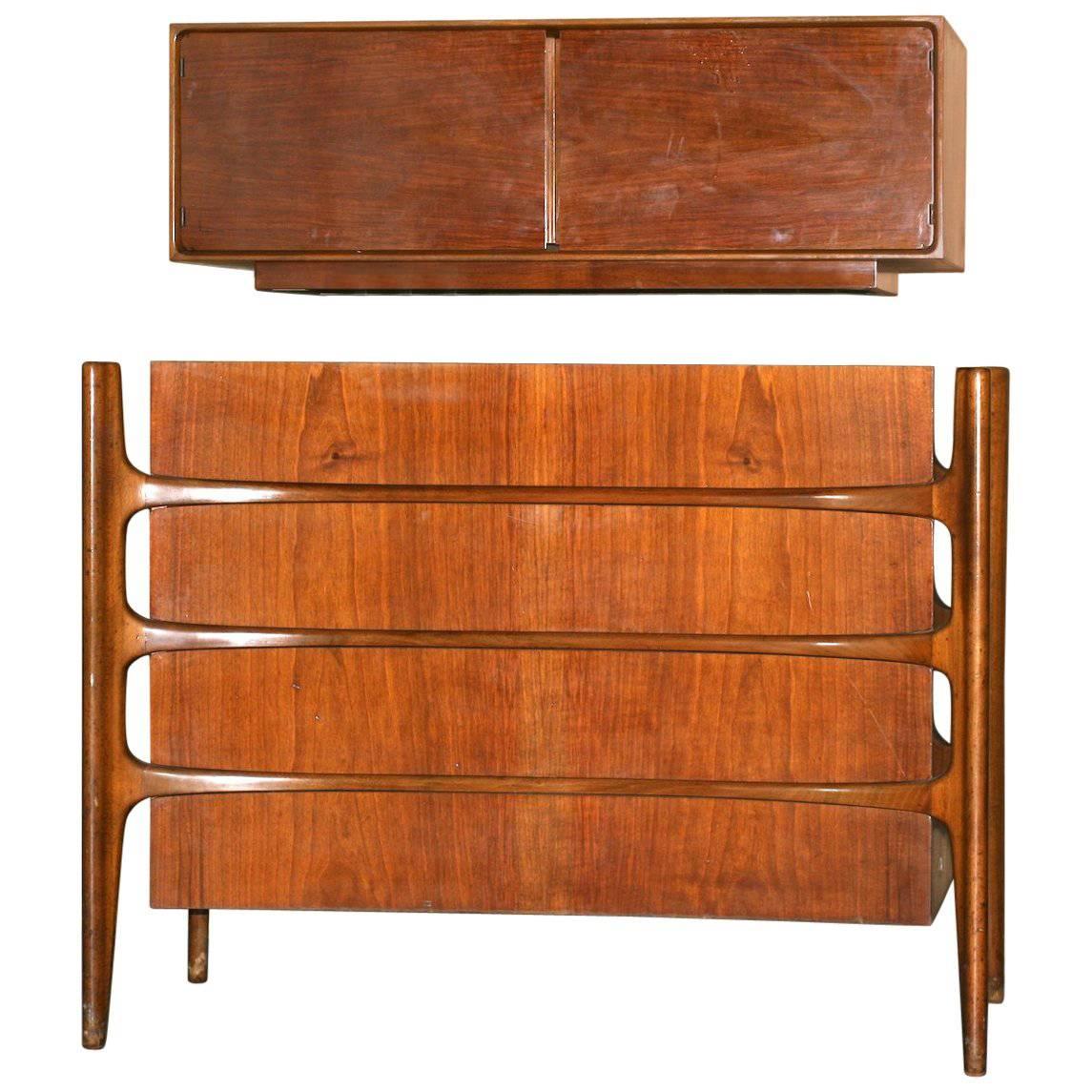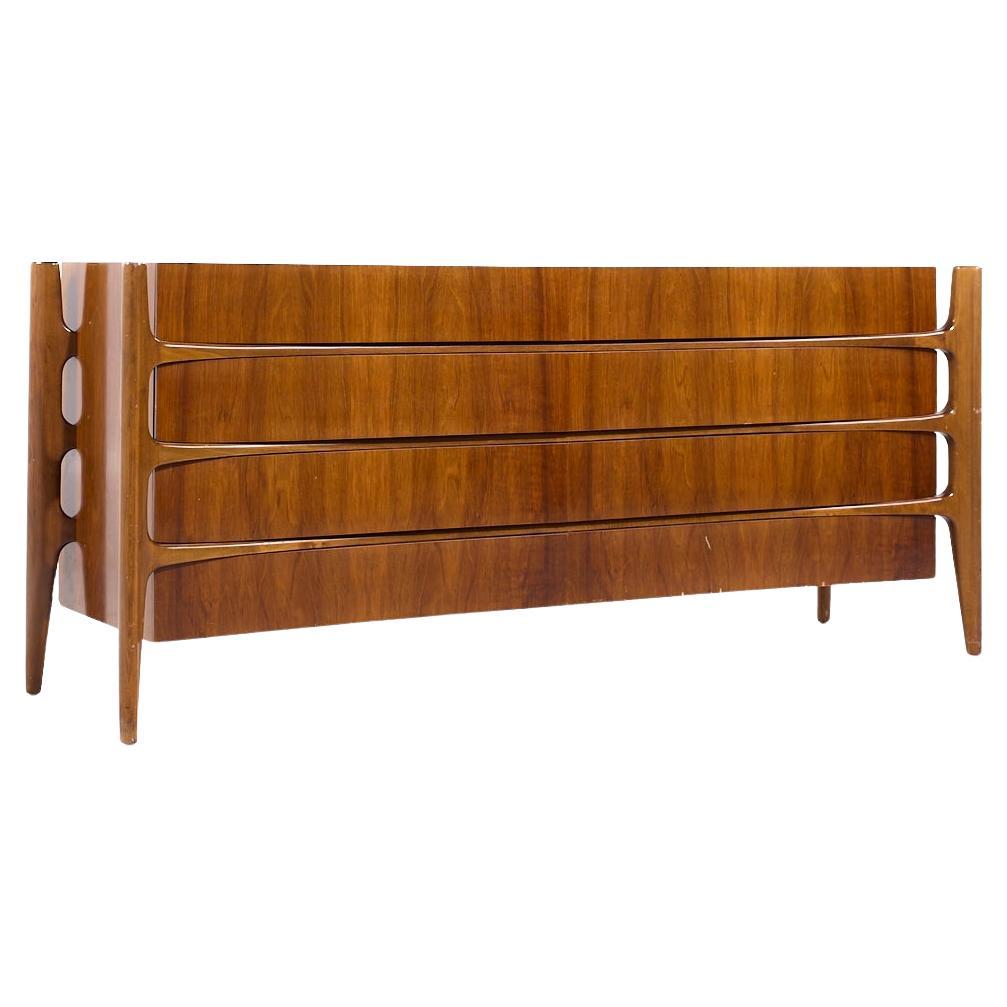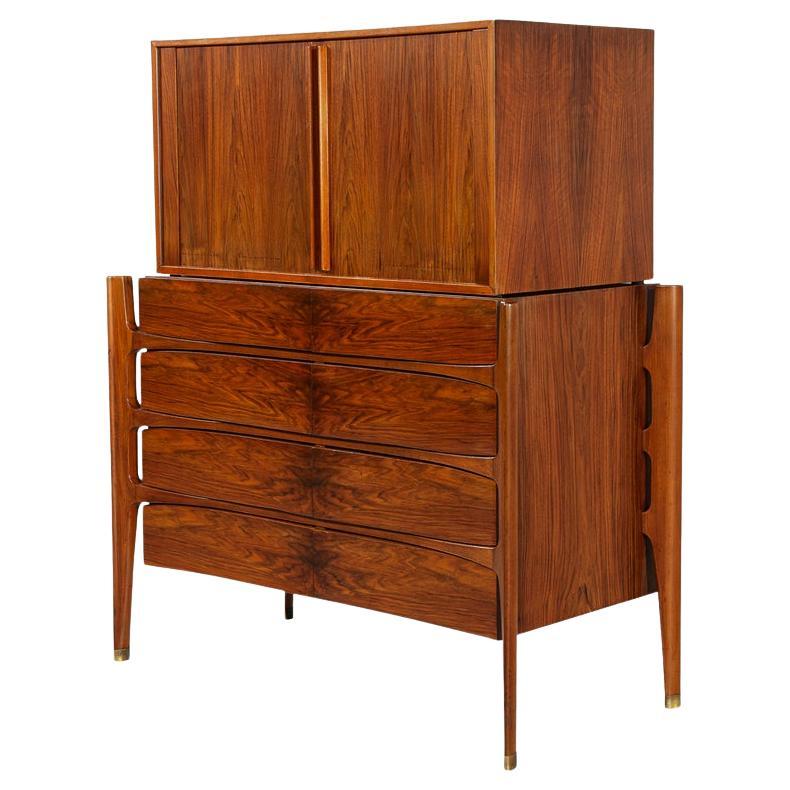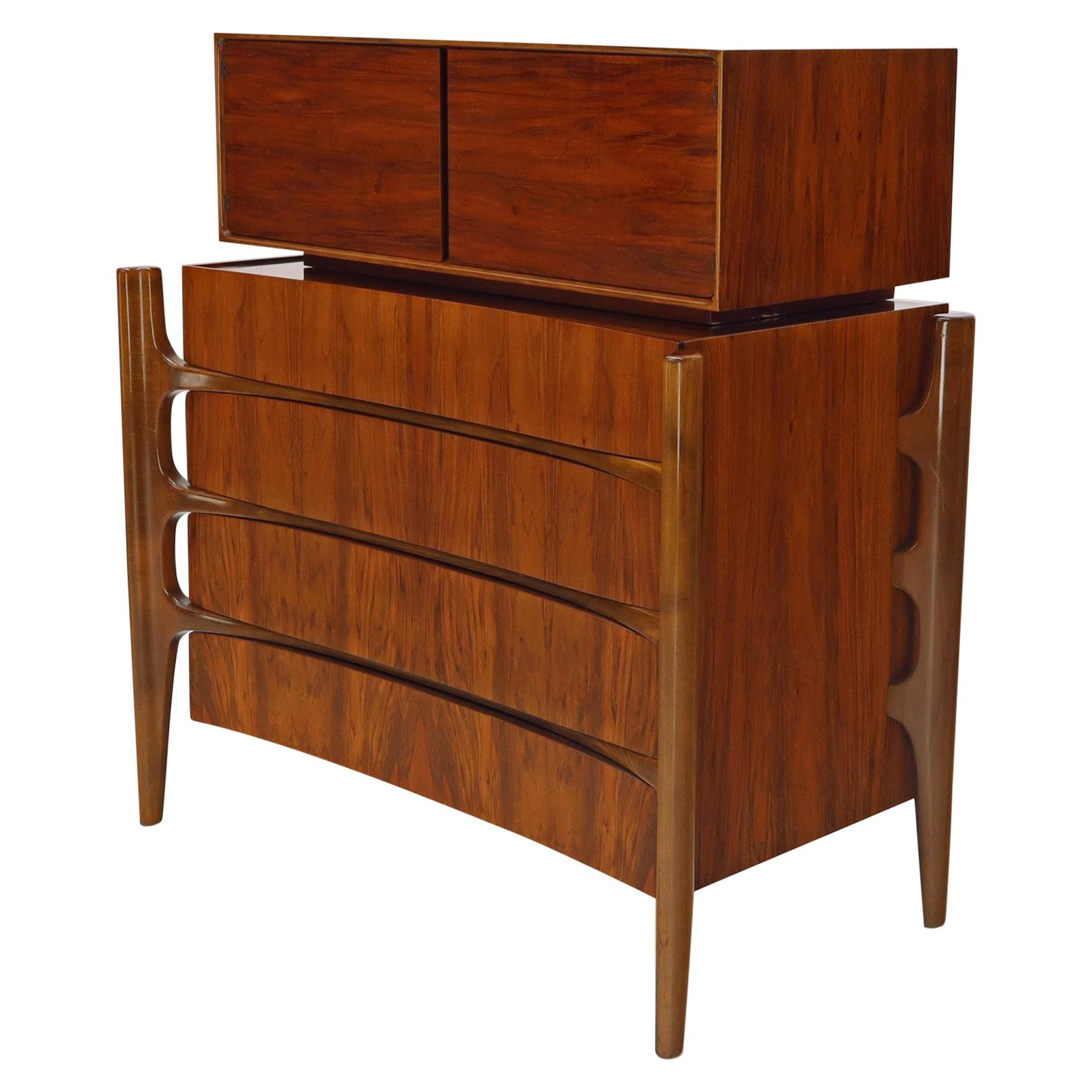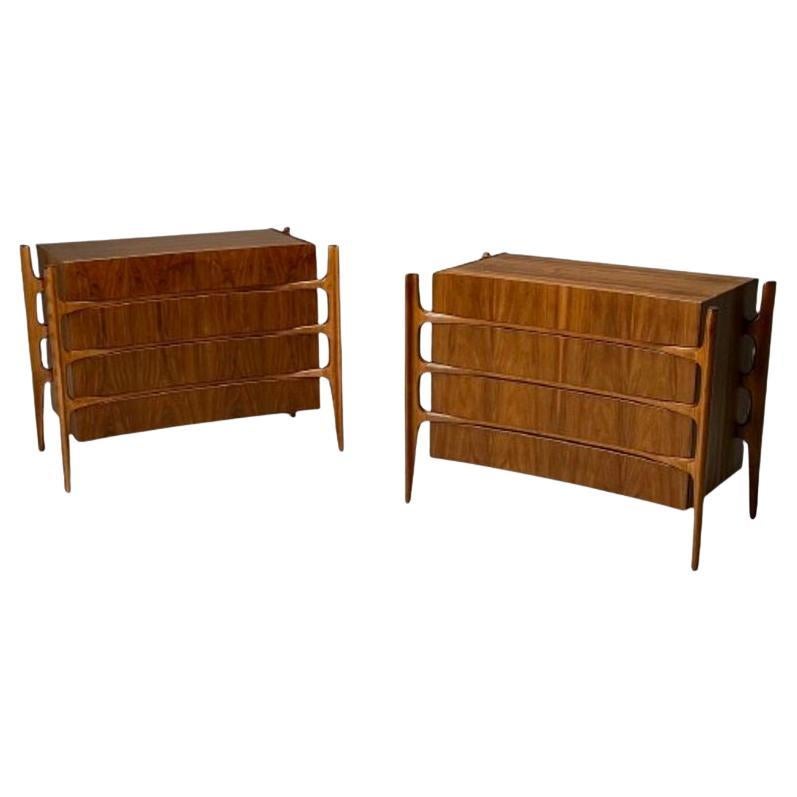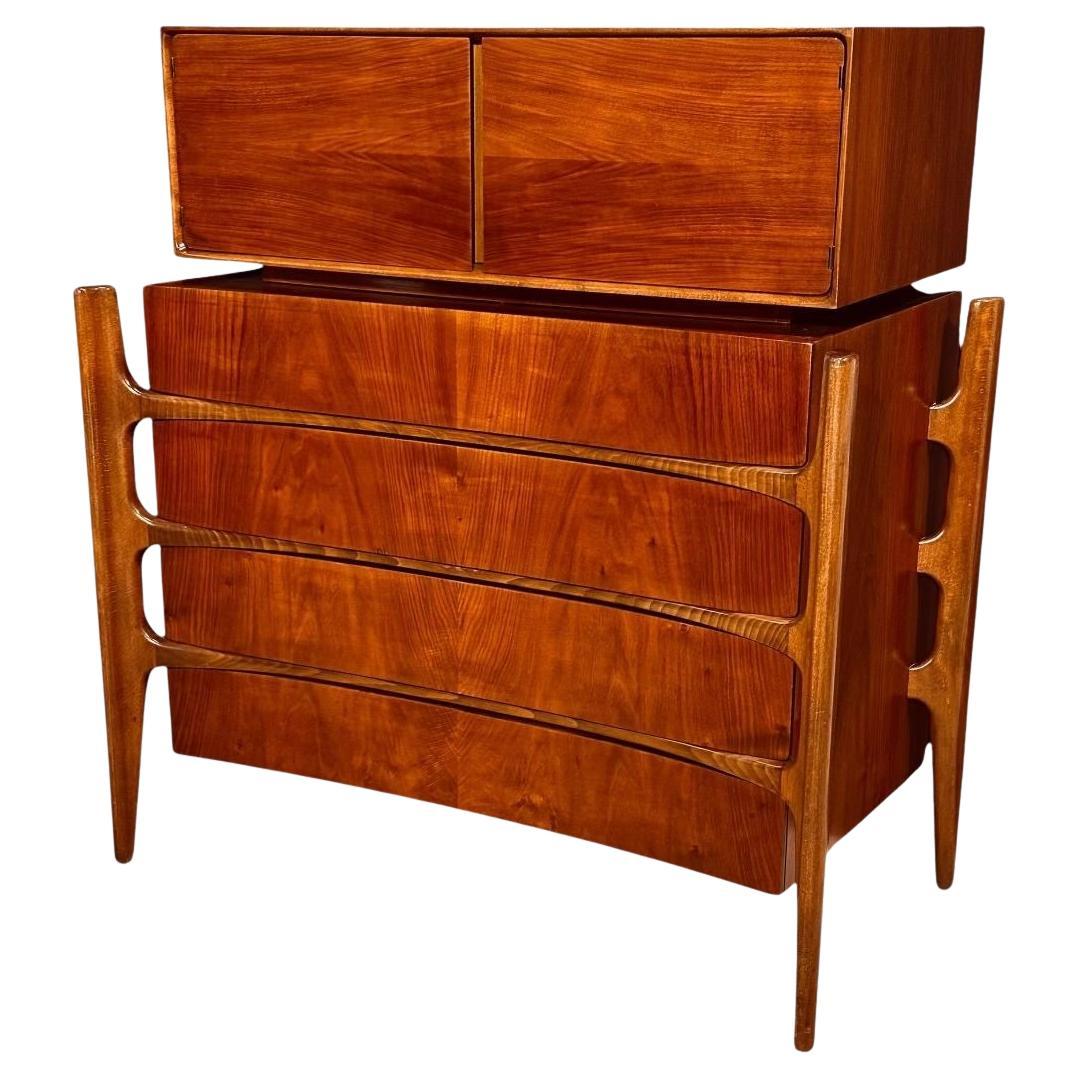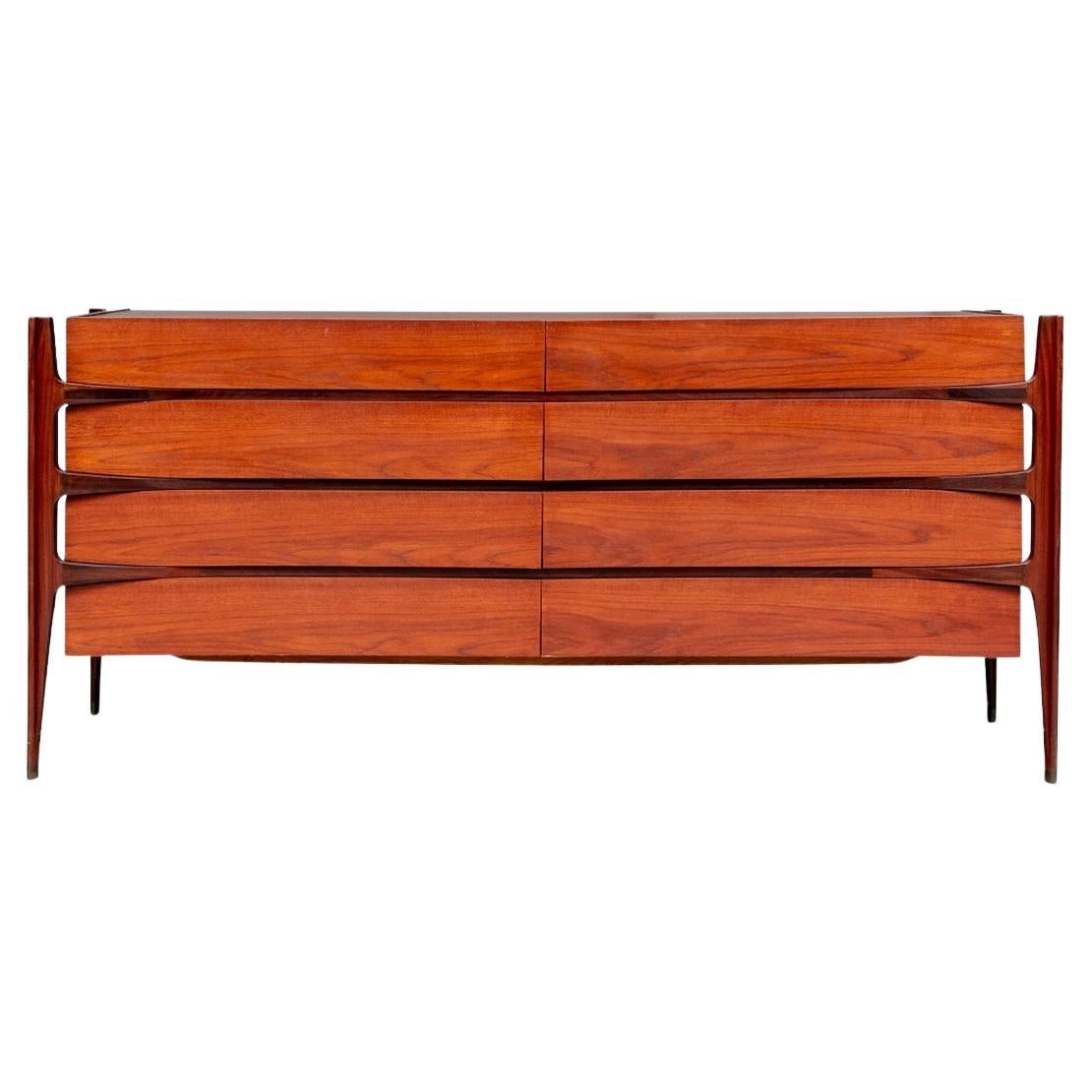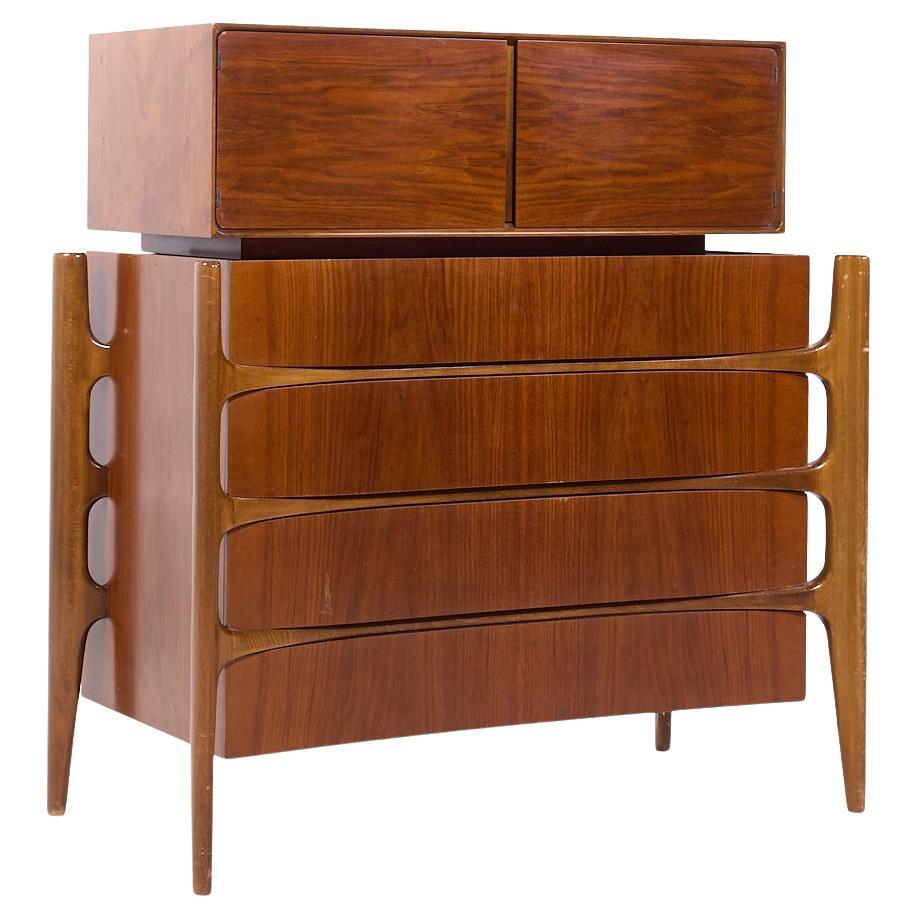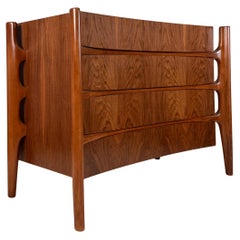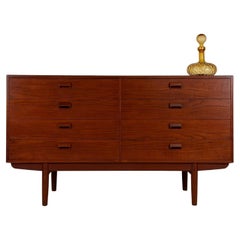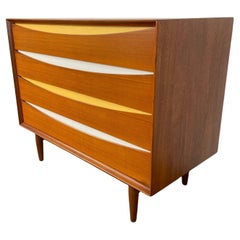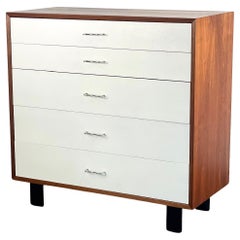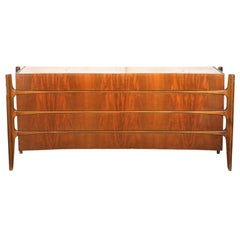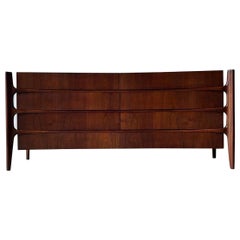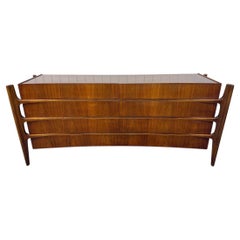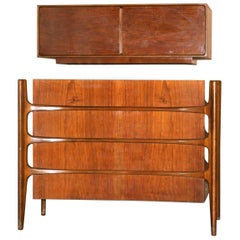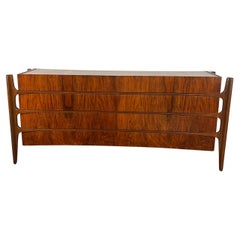
William Hinn Walnut Dresser by The Swedish Furniture Guild
View Similar Items
Video Loading
Want more images or videos?
Request additional images or videos from the seller
1 of 8
William Hinn Walnut Dresser by The Swedish Furniture Guild
$16,495List Price
About the Item
- Creator:William Hinn (Designer),Swedish Furniture Guild (Manufacturer)
- Dimensions:Height: 34 in (86.36 cm)Width: 29 in (73.66 cm)Depth: 79 in (200.66 cm)
- Style:Scandinavian Modern (Of the Period)
- Materials and Techniques:
- Place of Origin:
- Period:
- Date of Manufacture:Circa 1960's
- Condition:Refinished. Wear consistent with age and use. We have restored this case piece to excellent vintage condition.
- Seller Location:San Diego, CA
- Reference Number:1stDibs: LU6417239991072
About the Seller
5.0
Gold Seller
Premium sellers maintaining a 4.3+ rating and 24-hour response times
Established in 2020
1stDibs seller since 2022
63 sales on 1stDibs
Authenticity Guarantee
In the unlikely event there’s an issue with an item’s authenticity, contact us within 1 year for a full refund. DetailsMoney-Back Guarantee
If your item is not as described, is damaged in transit, or does not arrive, contact us within 7 days for a full refund. Details24-Hour Cancellation
You have a 24-hour grace period in which to reconsider your purchase, with no questions asked.Vetted Professional Sellers
Our world-class sellers must adhere to strict standards for service and quality, maintaining the integrity of our listings.Price-Match Guarantee
If you find that a seller listed the same item for a lower price elsewhere, we’ll match it.Trusted Global Delivery
Our best-in-class carrier network provides specialized shipping options worldwide, including custom delivery.More From This Seller
View AllWilliam Hinn Walnut Dresser by The Swedish Furniture Guild
By Swedish Furniture Guild
Located in San Diego, CA
Introducing the rare and stunning William Hinn curved front dresser by The Swedish Furniture Guild for Urban Furniture. This Swedish Modern classic has been executed in Black walnut ...
Category
Vintage 1960s Swedish Scandinavian Modern Dressers
Materials
Walnut
Teak Eight-Drawer Dresser by Børge Mogensen Teak Eight-Drawer Dresser
By Børge Mogensen
Located in San Diego, CA
This elegant four-drawer dresser is a refined example of Børge Mogensen’s enduring contributions to Danish Modern design. Crafted from warm, richly grained teak, the piece showcases ...
Category
Vintage 1960s Danish Scandinavian Modern Dressers
Materials
Teak
Arne Vodder Triennale 4 Drawer Dresser by Sibast
By Arne Vodder, Sibast
Located in San Diego, CA
An iconic design by Arne Vodder Triennale 4-drawer dresser was produced by Sibast Mobler, circa 1950. Constructed in teak, the 4-drawer dresser i...
Category
Vintage 1950s Danish Scandinavian Modern Dressers
Materials
Teak
$4,500 / item
George Nelson Basic Series Dresser for Herman Miller in white and walnut.
By George Nelson
Located in San Diego, CA
Beautiful White and Walnut Chest of Drawers by George Nelson for Herman Miller. This dresser is from the Basic series with its iconic black lacquer wood legs, beautiful walnut case a...
Category
Vintage 1950s American Mid-Century Modern Dressers
Materials
Metal
$4,036 Sale Price
20% Off
Rare Mister Dresser by Edward Wormley for Dunbar
By Dunbar Furniture, Edward Wormley
Located in San Diego, CA
A superb example of a Mid-century modern design, the mahogany tamboured Mister cabinet has an undulating face, expressive hairpin legs, and a useful sixteen drawer configuration. New...
Category
Vintage 1950s American Mid-Century Modern Dressers
Materials
Mahogany
Børge Mogensen Teak Four-Drawer Dresser – Danish Modern Masterpiece
By Børge Mogensen
Located in San Diego, CA
This elegant four-drawer dresser is a refined example of Børge Mogensen’s enduring contributions to Danish Modern design. Crafted from warm, richly grained teak, the piece showcases ...
Category
Vintage 1950s Danish Scandinavian Modern Dressers
Materials
Teak
You May Also Like
Midcentury Swedish Sculptural Dresser, William Hinn
Located in Riverdale, NY
Wonderful curved and sculptural dresser or credenza from the 1950s Sweden with an exposed biomorphic frame of exquisitely hand-sculpted solid walnut...
Category
Vintage 1950s Swedish Scandinavian Modern Dressers
Materials
Walnut
William Hinn "Exoskeleton" Dresser, Swedish, 1960s
Located in Raleigh, NC
Mid-Century Modern William Hinn Exoskeleton Dresser, Floating Case, Sculptural
Concave sculpted front design with edge mounted legs. Swedish Guild...
Category
Mid-20th Century Mid-Century Modern Dressers
Materials
Walnut
Mid-Century Swedish Modern William Hinn Sculptural Walnut Dresser
Located in Clarksboro, NJ
This listing is for a Mid-Century Swedish Modern William Hinn Sculptural Walnut Dresser. Featuring a straight line sculptural floating design, eight dovetailed drawers for storage, a...
Category
Mid-20th Century Swedish Mid-Century Modern Dressers
Materials
Wood, Walnut
William Hinn Dresser Cabinet
Located in Riverdale, NY
Cool, sculptural Swedish walnut four-drawer dresser with wall mount cabinet (three compartments) by William Hinn.
Amazing design with the curved dresser ...
Category
Vintage 1960s Swedish Organic Modern Dressers
Materials
Wood
$9,800 / set
William Hinn Mid Century Walnut Curved Front Lowboy Dresser
Located in Countryside, IL
William Hinn Mid Century Walnut Curved Front Lowboy Dresser
This lowboy measures: 78.25 wide x 24 deep x 33.75 inches high
All pieces of furniture can be had in what we call restor...
Category
Vintage 1970s Swedish Mid-Century Modern Dressers
Materials
Walnut
William Hinn Exoskeleton Dresser Chest Circa 1950’s
Located in North York, ON
This striking mid-century modern dresser, designed by William Hinn in 1950s Sweden, is a true statement piece. Dubbed the "Exoskeleton" for its distinctive and unforgettable silhouet...
Category
Vintage 1950s Swedish Mid-Century Modern Dressers
Materials
Walnut
Recently Viewed
View AllMore Ways To Browse
Floating Dressers
Curved Front Walnut Dresser
William Hinn
Concave Dresser
Hinn Dresser
William Hinn Dresser
Exoskeleton Dresser
Kipp Stewart For Drexel
Lane Brutalist Bedroom Furniture
10 Drawer Dresser
Ebonized Wood Dresser
Mirrored 1960 Dresser
1940s Wood Dresser
Antique Glazed Dressers
Midcentury Modern Nine Drawer Dresser
Pink Vintage Dresser
Vintage Yellow Dresser
Vintage Bassett Furniture
